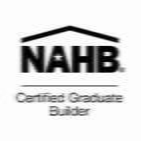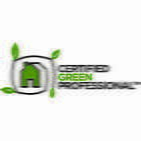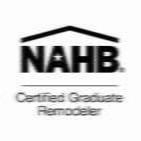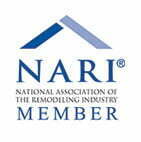Many of our buyers are less interested in “green” construction than they are in homes that offer health, comfort, and low ownership costs.
“Green” construction hasn’t been as big a hit among homebuyers as some builders hoped it would be. It’s easy to see why. Green has been over-used as a marketing term, often supported by vague definitions and poorly defined customer benefits. But while many buyers are no longer moved by pleas to “go green,” they remain very interested in homes that use less energy and require less repair and maintenance.
The good news is that homes built with attention to energy and durability have many “green” benefits, and are far better for the environment than many older homes. And their owners reap a harvest of concrete benefits.
That point is echoed by no less an authority than the U.S. Green Building Council, which defines a green home as “healthier, more comfortable, more durable, and more energy efficient, with a much smaller environmental footprint than conventional homes.”
Matt Power, editor-in-chief of Green Builder magazine, agrees that the term “green” doesn’t connect with a lot of buyers—even though builders who embrace the term do a great job meeting those buyers’ needs. “What we have come to understand as green is really just good building practice. It’s a high-performance home that’s healthy, safe, and comfortable, with predictable expenses.”
Of course even a conventional new home will be better on all these counts than one built as recently as 10 years ago, thanks to more stringent energy codes. But high-performance professional builders are raising the bar even higher.
These builders prioritize health, comfort, and energy efficiency with top-shelf doors and windows, high R-value insulation, careful air sealing, and ventilation systems that provide a steady supply of fresh air. By doing so they reduce heating and cooling bills, eliminate uncomfortable drafts, and ensure that the homeowners enjoy a healthy environment. These techniques also keep the home quieter by helping to muffle street noise. The result is a home that’s a sanctuary—a retreat where the family can relax.
When it comes to heating, cooling, and electric bills, the savings can add up fast. A savings of just $120 per month is $1,440 per year, or a five-year savings of $7,200.
High-performance builders also use quality products and careful construction detailing to reduce costly repairs over time. These details include good moisture management to keep water out of the structure, eliminating worries about mold and rot, as well as top-end mechanical equipment that will last for years without the need for replacement or repair. For instance, with today’s variable speed furnaces the fan runs at low speed much of the time. Besides requiring less fuel to operate, the fan will last longer than one in an older furnace, which runs only at high speed and is constantly switching on and off.
Which features the builder prioritizes will depend on the design, climate, local utility rates, and construction budget. A better insulation package might offer the best return on investment in one case, while upgraded windows might be the first choice in another. The professional builder will be familiar with the local market and able to choose the best options for the particular feature.
The ultimate benefit offered by the high-performance home is peace of mind. “What we’re really talking about is making the home more resilient,” says Power. “Because the home has a lower cost of ownership over time, the homeowners are better able to plan for, and weather, economic ups and downs.”
Make it a great day!


David Baud CGR, CGB, CGP
Baud Builders, Inc.
PO Box 5708
Wakefield, RI 02880
(401) 789-1176 – Phone
(401) 789-2258 – Fax
david@baudbuilders.com
www.baudbuilders.com
Copyright 2014. All rights reserved.









